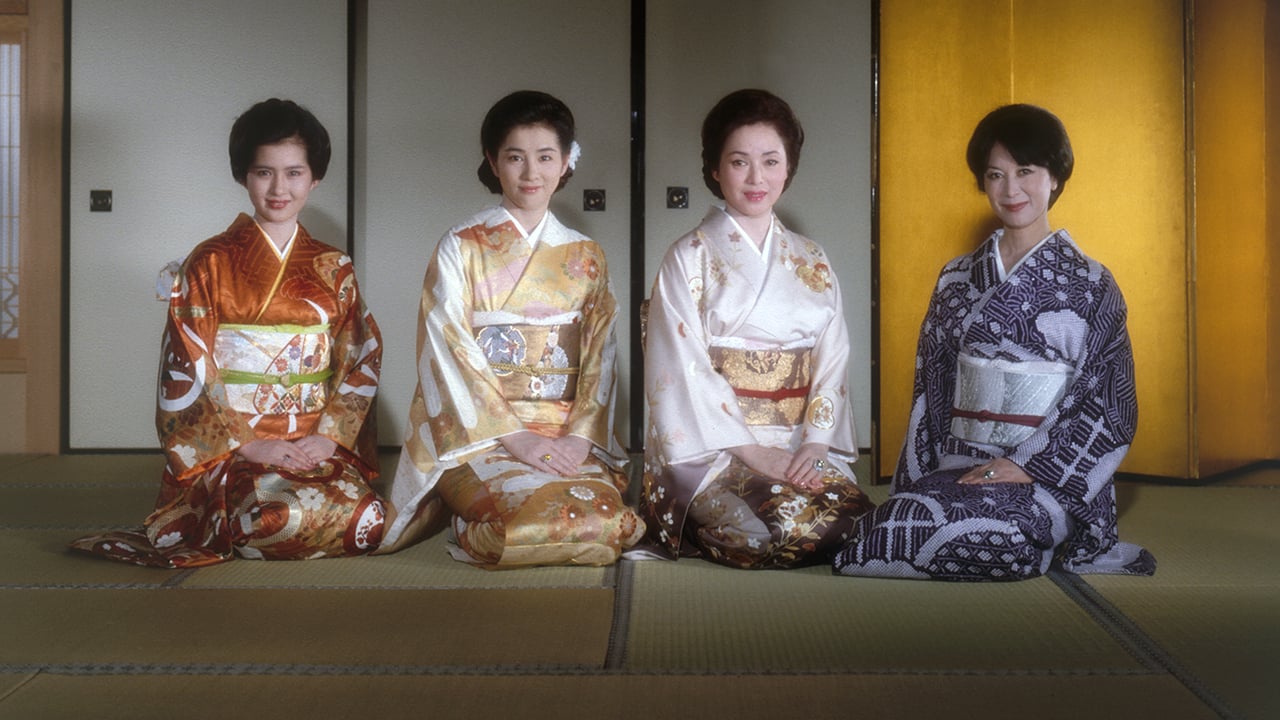



Very well executed
Strictly average movie
Instant Favorite.
A film of deceptively outspoken contemporary relevance, this is cinema at its most alert, alarming and alive.
View MoreViewed on DVD. Subtitles = one (1) star. A pot boiler with sumptuous production values. Exterior location and interior sets look/are authentic. The kimonos are stunning. Acting, direction, and cinematography are close to (if not) first rate. Authentic Western Japan dialect (now and then). That's the good stuff. Now the rest. If you were native-born Japanese and lacked English language conversational skills (more and more a rarity today), imagine how, say, a BBC soap opera would come across based on subtitles? Without being able to catch and enjoy much in the way of acting nuances, subplots, etc., would it appear to be just plain tedious, repetitious, and boring? Probably. Also an apt description of this Criterion disc version: it's tedious, repetitious, and boring. The subtitles are vacuous and often incorrect. The disc cries out for extensive supplemental material on what the film is about, the culture it recreates, the author of the source material, backgrounds on the director and lead actresses, etc. If you lack Japanese conversational skills, work on your Japanese, and then re-visit the film in a few years. You might be amazed at how much it has "improved"! Except for the cheap synthesized music. WILLIAM FLANIGAN, PhD.
View MoreKon Ichikawa's "The Makioka Sisters" (aka "A Fine Snowfall") centres on the lives of four upper middle class Japanese sisters during the lead up to the Pacific War. The sisters belong to the Makioka family, a once powerful house which is now witnessing its declining years.The film opens with various misty landscape shots, before settling upon close ups of flower blossoms and petals. Throughout the film, like Ozu, Ichikawa uses ripening fruit and flower buds to suggest impermanence, transience and the passage of time. As Japan awaits change (and bloodshed), the sisters mourn the loss of their parents, fret over their family's finances and battle over tradition. One sister must be wedded to a man before she reaches a certain age, but her moxy and fiery independence (shades of Jane Austen) are at odds with both her biological clock and Japan's customs. Another sister wants to use the family's money to start a doll-making business, but the venture soon gives way to conventional, Western style sewing. All the while, time spirals away, inexorably towards...Much of the film focuses on rituals and customs, most of which are drawn out to the point of parody, or shown to be archaic, laborious and ridiculously inflexible. Holding on to these customs, the eldest sisters believe, will preserve their house's greatness. But these customs, the film shows, are already dead, entombed buds desperately awaiting the new blooms promised by the two youngest, somewhat dissident sisters.The film is stately, melodramatic, lush and colourful, but at times conjures up the spooky lavishness of Kobayashi's "Kwaidan". Ichikawa films the sisters in such a way that they are at times made grotesque and ghostly by ritual. Like John Huston, Ichikawa's filmography is comprised largely of adaptations of highly-regarded literary works. "The Makioka Sisters" was based on a novel by by Junichirô Tanizaki, a major Japanese novelist.8/10 - Worth one viewing.
View MoreI give this film 10 out of 10 as even after seeing it more than 10 times it still moves me deeply. I was 15 years old when I first saw this movie in the theater in Seattle. I went back to see it again a couple of weeks later. The first 13 minutes during the credits is my favorite scene, filmed in Kyoto in Springtime. Read the book for more background. The Kimono worn by the female actresses are amazing. The late Juzo Itami plays the father. All the dialog is spoken in "Osaka-ben" or Osaka dialect, which has a softer sound than Tokyo dialect. You can also hear some Kyoto-ben too ("gomen-yasu" said by a servant upon entering in the first scene before entering the room). This film brings me to tears it is so beautiful. At the end of the first scene, when the camera pans out to the cherry blossoms outside and the music starts...it is cinematic heaven! I am waiting for this film to come out on DVD.
View MoreThis is a gorgeous film to watch--you probably will never see a more beautiful view of Japan as you see of the wonderful cherry blossoms or Japanese Maples around Kyoto and Osaka. So, the cinematography is excellent. However, the story itself seemed awfully flat overall. The writing and acting was decent, but the film needed more energy, heart and a sense of humor for me to care more about the characters. Most of the characters would have surely benefited from a massive dose of this, as the way they were portrayed it was, at times, hard to for me to care about them or sustain my interest in the film. For example, the 3rd daughter (who was the one who repeatedly refused marriage proposals) was a bit of a cipher, as she didn't say very much and just used a lot of facial expressions instead of dialog. The youngest, though a little self-destructive, was probably the easiest to like or at least understand. And the two older sisters were very domineering but needed to be softened a little more--lest they seem too one-dimensional. A decent film, but that's all.
View More